Japanese quince: composition, benefits and harms to the body
Quince has always been considered a very healthy fruit. Growing it on a personal plot does not cause additional trouble - it does not need excessive watering, it tolerates dry summers well, and at the end of the summer period pleases with the appearance of appetizing fruits.
Each quince contains a large list of macro- and microelements. It is beneficial for its nutrients. The main thing is to know in what cases, you need to lean on the fruit, and when you should refrain, so as not to provoke a deterioration in the condition.
Content:
- Description of the fruit
- Composition and useful properties
- Harm and contraindications
- Application
- How to choose and store correctly?
Description of the fruit
Quince - an interesting fruit with unique properties. Its ripening period begins in late summer - early September. But if the first frosts suddenly appear, you should not leave it on the branches, its useful qualities are immediately lost.
Japanese quince is a dwarf tree.
Most often, its description is reduced to the designation of "shrub that does not differ in height." The greatest height of the shrub can reach 5 m in height, but in cold climates its branches do not stretch more than 1.5 m. Its fruits are grown not only for medicinal purposes, but also for obtaining delicious sweets, as well as for conservation. Often, fragrant fruits are consumed fresh. From above, each fruit is covered with a slight soft nap, which protects it from external influences from insects and wasps.
The shape of each fruit is a small spherical or pear-shaped apple with a yellow tint. On the palate - the pulp is dense with a persistent lemon aftertaste. Sometimes tart notes are present, but they disappear as they ripen. Quince spread across the territory of our country from the Caucasus and Central Asia. It is the climate of these regions that is ideal for growing delicious fruits.
Composition and useful properties
Unripe fruit will taste very sour and tart. This effect is produced by the tannins contained in the composition in large quantities. In addition to this component, the following elements are a part of quince:
- Ascorbic acid - 180 mg per 100 g of product.
- Cellulose.
- Pectin.
- Organic acids.
- Phenolic compounds and carotene.
- Fructose.
- Sahara;
- Essential oils.
- Vitamins of group B, PP, A, E.
The pulp contains a significant list of elements such as calcium, iron, copper, magnesium, titanium, boron, nickel and manganese. These nutrients have a huge impact on the human body, both positively and negatively if contraindications are found.
The benefits of using quince are as follows:
- To enhance immunity.
- With severe intoxication of the body, it is recommended to consume the fruits in order to provoke the removal of toxins and salts from the internal organs.
- Helps to strengthen the structure of blood vessels and capillaries.
- Increases membrane permeability.
- Normalizes the functioning of the circulatory system.
- The use has a great effect in the treatment of inflammatory processes in the oral cavity and upper respiratory tract.
- Stabilizes intestinal upset.
- It normalizes blood pressure in people of retirement age.
- With frequent sexual diseases in women, it improves the composition of the vaginal mucosa.
- Sugar is stabilized and the normal level of cholesterol in the lymph is established.
In addition to the beneficial properties that manifest themselves during the work of internal organs, medical workers recommend using quince for colitis, tracheitis, flatulence and nervous exhaustion, as well as for liver diseases and fissures of the anal canal at the external stage of hemorrhoids.
It is advisable to use freshly squeezed juice as a general tonic for frequent diseases of the nasopharynx and bronchi. If you drink the juice constantly, then it begins to act as a diuretic. Quince seeds, when infused as a decoction of medicinal action, affects the body as a laxative effect. Such infusions help against a strong barking cough, as well as for the treatment of conjunctivitis as a lotion for the eyelids.
Harm and contraindications
Whatever useful qualities the Japanese quince has, it is recommended to check before using it if there are any contraindications in humans. If detected, it is better to introduce fruits into the diet, they can, instead of benefit, provoke harm and serious consequences for the whole organism.
Contraindications identified when ingested for the following diseases:
- Pleurisy is a ban on food for both treatment and prevention.
- Chronic constipation - quince in its qualities thickens the masses in the intestines. Therefore, it can lead to the formation of fecal stones that block the small intestine.
- Ulcerative diseases of the duodenum and stomach - you can not drink freshly squeezed juice from quince. Due to the increased acidity, fresh juice intensifies the pain sensations inside the organs.
- It is not recommended to brew damaged inner seeds. With mechanical injuries, they release a toxin dangerous for the body - amygdalin, which provokes poisoning.
- Do not get carried away with juices and fresh quince. Such drinks can cause loss of voice and hoarseness.
Among other things, quince is a very strong allergen. Therefore, when using fruits for food in case of an allergic reaction, in the form of an aggressive rash all over the body, burning and itching of the skin, the appetizing fruit should be abandoned.
Application
When, how and why quince is used in medicine:
- Quince is effectively used for colds. To eliminate cough and provoke more sputum discharge (expectorant properties), seeds or leaves of a tree are used.
- For frequent asthma attacks, fresh juice can be used. It is recommended to introduce it into the diet half an hour before meals, 3 times a day. Long-term use guarantees a decrease in the frequency of asthmatic manifestations of the disease.
- In the first trimester of pregnancy, doctors recommend that women eat baked fruits in small quantities in the morning. Their acidity and tart taste dulls toxicosis.
- With edema, when hypertension progresses, as well as age-related problems with the kidneys, as a folk remedy that provokes a diuretic effect, infusions from an appetizing fruit are used. Cooking requires bush leaves and internal seeds from the eaten product.
- Heavy bleeding during the period of monthly menstruation in women can be reduced by making an infusion introduced into the body instead of tea. This drink can be diluted with honey or lemon to increase the taste.
- The infusion is effective in the appearance of early gray hair - it saturates the hair with useful elements, and each hair is enveloped in a protective layer. As a result, the color regains its color for a certain period.
- The delicate problem of hemorrhoids does not always push a person to visit a doctor. In advanced cases, with numerous cracks and bleeding, medical professionals advise to seek treatment as lotions dipped in juice.The procedure gives positive results, promoting rapid tissue regeneration and wound healing.
Quince is also successfully used in cooking. With its help, you can spin a variety of compotes, jams, preserves. Various creams and mousses are made as a dressing for cakes. It also makes a delicious pudding.
Thus, the use of the tasty fruit is not limited to its medicinal potential. Delicious products come from the hands of experienced chefs using this fruit.
How to choose and store correctly?
In order not to provoke an oversaturation of the body, doctors recommend using no more than 1-2 pieces of ivink. But even this amount can adversely affect the internal organs and well-being of a person. Therefore, you need to monitor the state of your own body. If ailments appear, it is better to refuse frequent use. The best option is to consume 1 piece per week.
When choosing, you should focus on the volume and appearance of the fetus.
It should be no more than 5 cm in volume, bright orange or deep green with a bright yellow tint. Have a pleasant smell and slightly tart taste. It is these indicators that are present in a good ripe fruit. If you press lightly on the cavity of the quince, it should not bend or be soft. Its normal state is elastic or even firm consistency. The skin should be fluffy, free of visible cracks or dents, and also free from signs of deterioration. If the product was frozen during the first frosts, its taste is saturated with notes of fermentation. In this case, it is not suitable for eating.
If the product was removed from the branch on time, it can be placed in the refrigerator in the vegetable compartment or kept in a cool room at a temperature not exceeding +6 C. It is not worth freezing - useful elements are lost, the structure of the pulp loses its juiciness. Thus, if you choose a high-quality and ripe product, you can store it for a long period of time and enjoy the last memories of the past summer. In addition, consumption has a positive effect on many internal organs and body systems.
More information can be found in the video:



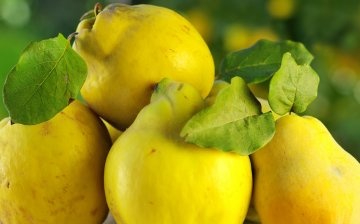
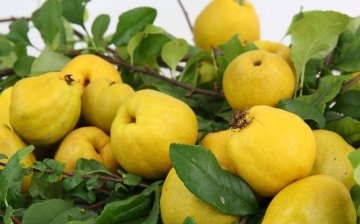
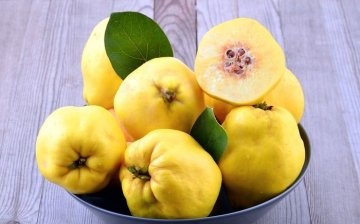
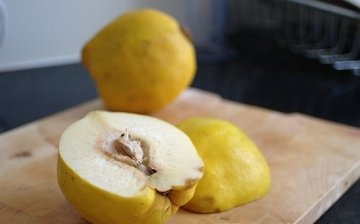
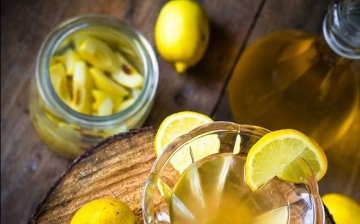
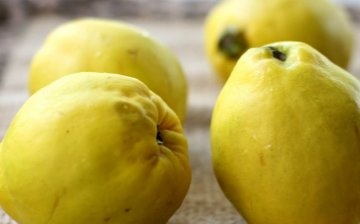






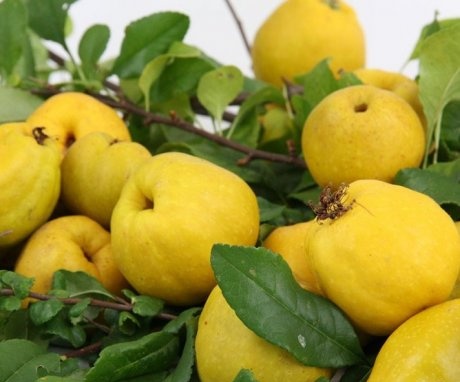
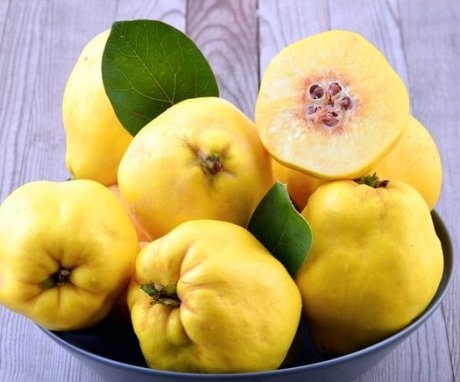
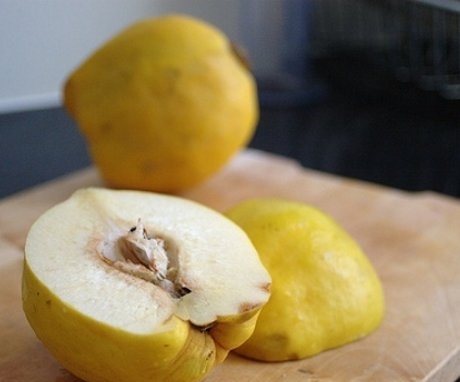
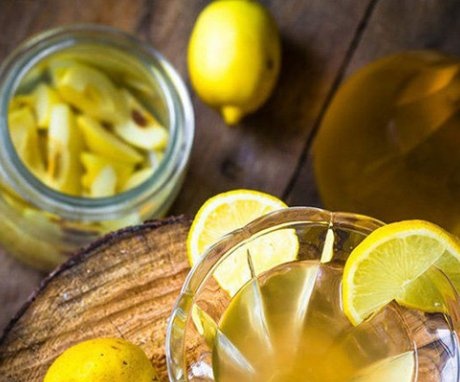
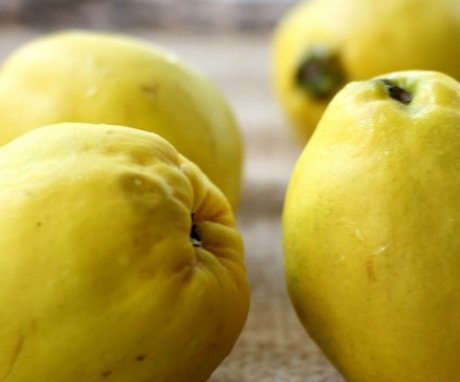
It would be interesting to grow such an unusual plant in the Moscow region, but still, quince is more suitable for southern latitudes, in the Non-Black Earth Region its fruits are unlikely to reach maturity and will be tasty.
Judging by the beneficial and negative properties of this delicious fruit, you don't need to eat a lot of quince so that its beneficial qualities do not turn into harmful ones. I especially do not like the fact that the fruit can cause an allergic reaction.
I have two quince trees in my summer cottage, a very capricious plant, I can assure you. I didn’t know that she might be allergic, my wife is allergic, I’ll have to tell her, otherwise she loves this fruit very much.